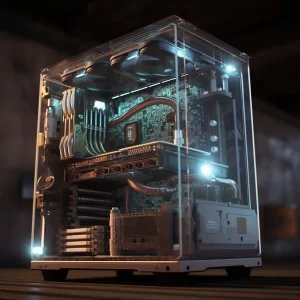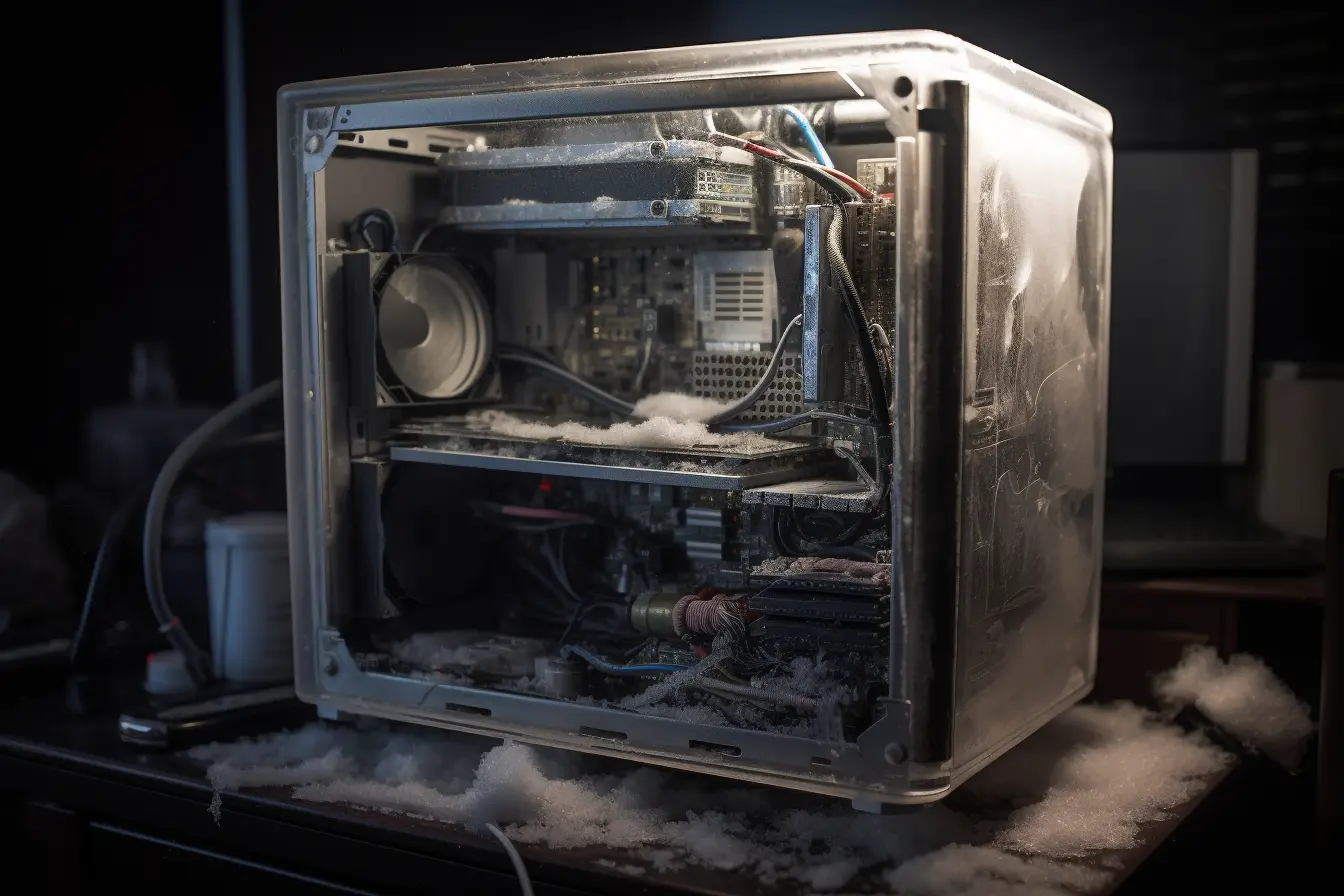In the field of computer hardware, there are generally two ways to cool a graphics card: air cooling and water cooling. At present, the majority still use air cooling. However, as gamers continue to chase higher performance and more power-hungry graphics cards hit the market, water cooling is increasingly seen as a more advanced choice, with the added benefit of quieter operation. In the Reddit community, I noticed that some enthusiasts have been discussing the possibility of transitioning from a water-cooled setup to an air-cooled one. Let’s delve into the feasibility of such a change.
Understanding Water Cooling and Air Cooling

Let’s first examine the two primary cooling methods for GPUs: water cooling and air cooling. Each of these has its own advantages and disadvantages.
Water Cooling
Water cooling, also known as liquid cooling, employs a liquid coolant to absorb heat from the GPU. This liquid is circulated through a loop that passes over the GPU, drawing away the heat and carrying it to a radiator where it’s dissipated into the surrounding environment.
Advantages | Disadvantages |
Superior heat dissipation, ideal for high-performance GPUs | More complex to set up and maintain |
Quieter operation | Typically more expensive than air cooling |
Can provide a cleaner, more streamlined look inside the PC case | Risk of leaks, which can cause serious damage |
Air Cooling
Air cooling, the more traditional method, uses a combination of heatsinks and fans to manage GPU temperature. The heatsink, usually made of metal with high thermal conductivity like copper or aluminum, absorbs the heat from the GPU. The fan then blows air over the heatsink, carrying the heat away and dispersing it into the environment.
Advantages | Disadvantages |
Simpler to install and maintain | May not provide adequate cooling for high-end, high-performance GPUs |
Typically more affordable | Usually produces more noise |
No risk of leaks | Can take up more space in the PC case |
The choice between water cooling and air cooling often comes down to your specific needs and preferences, including factors like your GPU’s performance level, your budget, the amount of space inside your PC case, and your tolerance for noise.
Feasibility of Switching from Water Cooling to Air Cooling
Generally, most GPU cooling methods are air-cooled. The majority of players upgrading to high-end graphics cards tend to shift to water cooling. However, what about going the other way round – from water cooling to air cooling? Is such a transition feasible?
Interchangeability of GPU Coolers
While certain GPUs are designed with removable coolers, providing flexibility in choosing a cooling system, this is not the case for all GPUs. Some models, for instance, have a water block that is integrated into the GPU and may be difficult to remove without the potential of damaging the card. Please ensure whether your GPU’s design supports such a change.
Necessary Tools and Expertise
The transition also requires a certain level of technical skill and the appropriate tools. Working with delicate and expensive hardware requires careful handling to avoid any accidental damage. Furthermore, the process might require thermal paste application, attaching a new cooler, and ensuring proper fitment in the case, all of which requires a good understanding of PC hardware.
While switching from a water-cooled GPU to an air-cooled setup is technically feasible, the process should be undertaken with due consideration of the factors discussed above. Not only is it crucial to understand the specifications and design of your particular GPU, but also the level of expertise required to perform the operation safely and effectively.
Considerations When Making the Switch
When contemplating the shift from water cooling to air cooling for your GPU, it’s essential to bear in mind several factors that may impact the feasibility and effectiveness of such a transition.
Thermal Design Power (TDP)
The TDP of your GPU is a key determinant of the kind of cooling system that you will need. For GPUs with a high TDP, an air cooling solution may simply not provide adequate cooling performance. Before deciding to switch, ensure that your proposed air cooler is rated for your GPU’s TDP.
Space Within the PC Case
Air coolers are typically larger than water blocks, requiring more space within your PC case. Before opting for an air cooler, check to confirm that your case can accommodate the size of the cooler and still allow for adequate airflow.
Noise Levels
Air coolers, especially under heavy load, tend to produce more noise compared to water cooling solutions. If you value a quiet computing experience, this is a factor to consider.
Cost
While the upfront cost of purchasing an air cooler may be less than a water cooling system, remember to consider the potential additional costs. These could include the need for case fans, or potentially even a larger case if your current one cannot accommodate the new cooler.
In Conclusion: Is It Wise to Switch from Water Cooling to Air Cooling?
In summary, transitioning from a water-cooled to an air-cooled GPU setup is indeed possible. However, before you start change, do consider the points we’ve mentioned. Ask yourself, is it really necessary to go through all this rigmarole?
You may also like: Why doesn’t Apple incorporate water-cooled heatsinks in their products?

